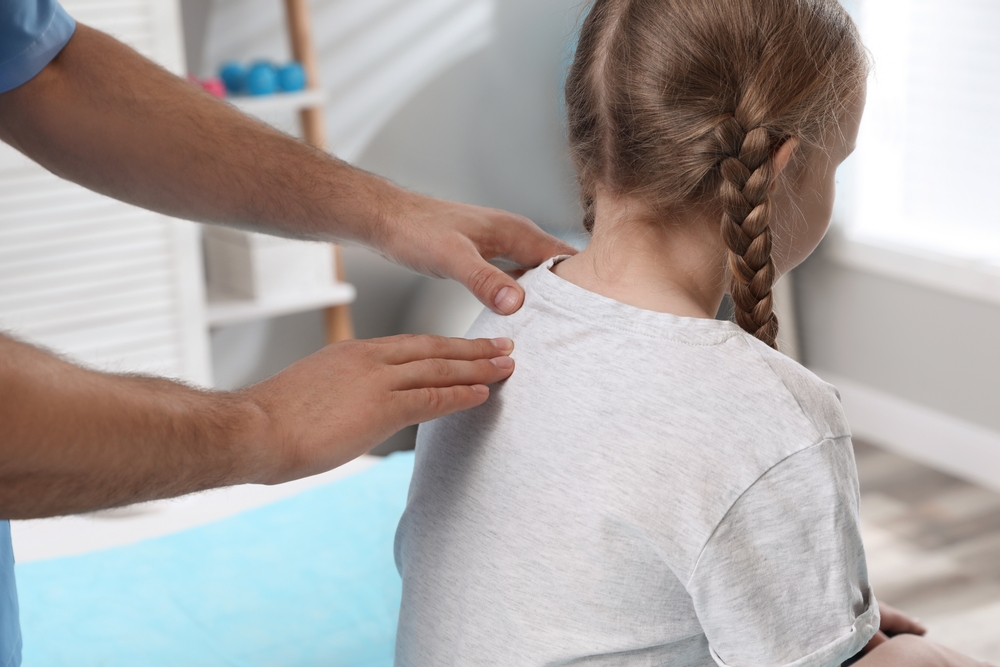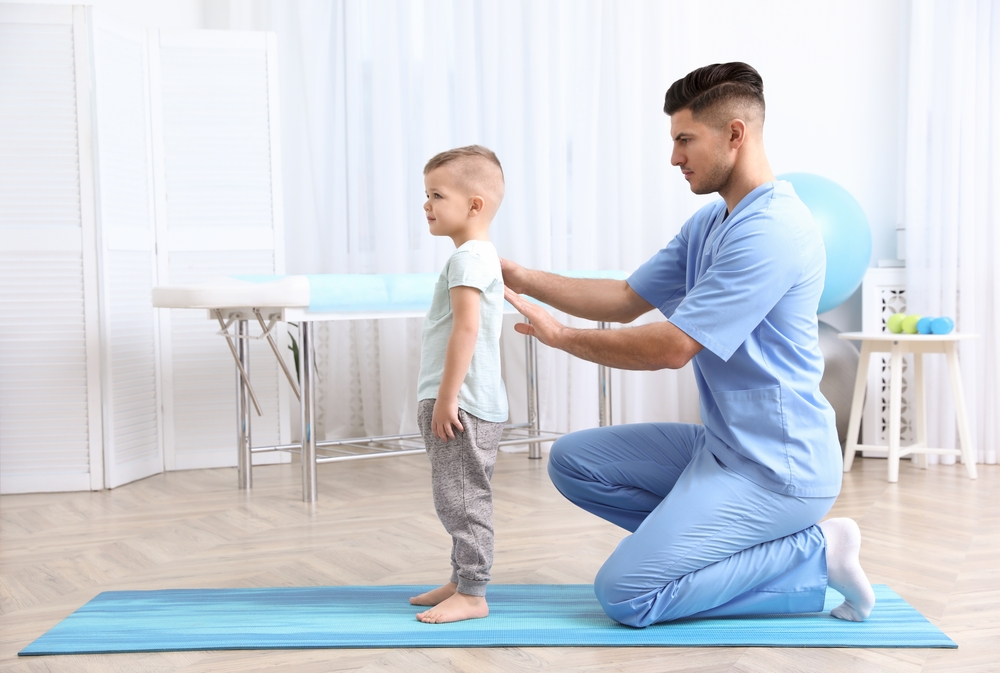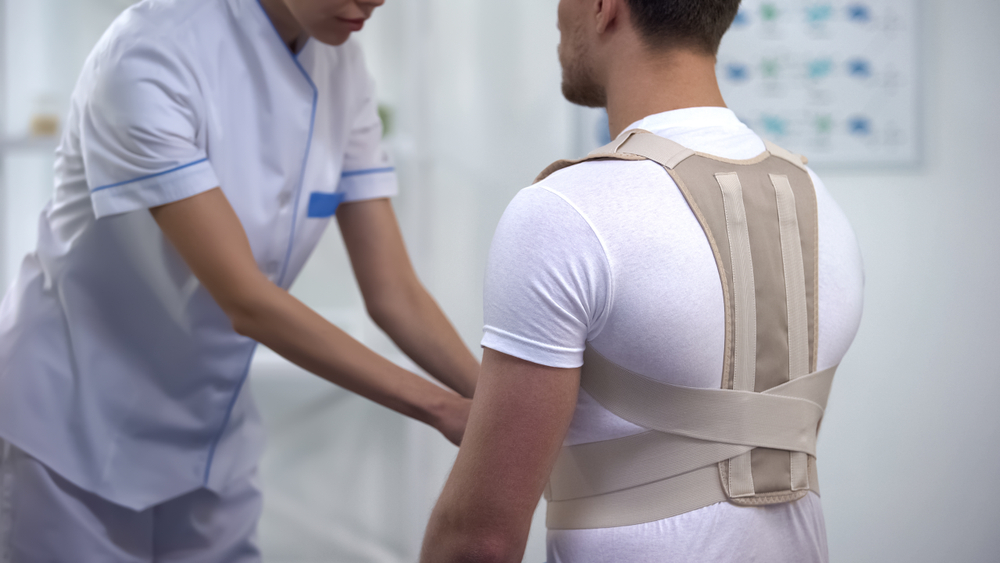Between physical therapy, different types of bracing, or even spinal surgery in extreme or sometimes unnecessary cases, it would be comforting to know that the long-term effects of scoliosis bracing and alternative treatments are permanent. It’s also helpful to be aware of the implications of skipping bracing altogether.
This article will explore both of those concerns in-depth.
When Is The Right Time For Scoliosis Brace Treatment?
The right time for brace treatment is during a child’s growth spurts. We know that the long-term effects of scoliosis bracing are most impactful during this developmental period, although questions remain about long-term stabilization into adulthood and beyond. There is still some controversy over the long-term effects of scoliosis bracing among certain homeopathic practitioners.
Let us look at a real-life case of a girl with adolescent idiopathic scoliosis. The case we are studying is the treatment of an eleven-year-old girl. For her privacy, we will call this girl Lisa.

Lisa’s treatment started when she turned eleven, and weaning from the brace began when she was fifteen since the scoliosis experts and her doctor anticipated no more residual growth.
When Lisa began treatment with the Rigo-Chêneau brace, her Cobb angle measured thirty- eight degrees. After two years of bracing, the Cobb angle was reduced by over 50% to nineteen degrees. The Cobb angle did increase slightly to 14 degrees at weaning.
When Lisa turned twenty-one, five and a half years after brace weaning, there was no change in the Cobb angle, which steadied at nineteen degrees. Lisa and her happy parents were extremely satisfied with the outcome of the treatment, and Lisa has full functionality in every way.
Does Scoliosis Brace Treatment Even Work?
Why does the idea that bracing does not work remain when so many scoliosis research findings and case histories show that the opposite is true? There is a practical side to this claim for practitioners who are not medical doctors – chiropractors and nutritional experts aiming to boost and sell their treatment plans being one example.
For actively growing children, teens, and anyone with a Cobb curve above twenty-five percent, treatment without a brace is risky and even dangerous considering the long-term effects of scoliosis.
Chiropractors like Dr. Jordan Axe use muscle-strengthening techniques and soft brace treatment approaches. These ideas sound appealing, but only if the Cobb curvature is negligible or under twenty-five degrees. With a substantial curve, muscle firming and strengthening alone will not make significant changes. It’s not the muscles that are the problem, but the bone structure of the back.
A soft cast for a minor fracture is great, but a hard cast must be worn for more serious breaks. Similarly, a person with a major curvature of the spine needs a hard brace to realign and fix the bone structure.
Dr. Axe claims correctness is lost after the patient stops wearing the brace, sometimes requiring surgery afterward. Reliable scientific evidence shows that these claims are false and that the scoliosis brace success rate is high.
BrAIST study
Dr. Stuart Weinstein’s 2013 BrAIST study is one of the most important conclusive studies of the benefits and effects of scoliosis bracing for adolescent idiopathic scoliosis. Nine additional studies met the Scoliosis Research Society’s criteria confirming that bracing is the most successful treatment. Each of these studies demonstrated that the average success rate of the treatment was 85.4%. As of last year, 2019, it was confirmed by the above society that bracing is successful in treating most patients who have adolescent idiopathic scoliosis.
Interestingly, this study ended prematurely because of ethical reasons. Why put a child into jeopardy with the long-term effects of scoliosis when the scoliosis brace success rate is high, and data clearly shows a great likelihood of permanent, irreversible damage without it?
The Overwhelming Success of Scoliosis Bracing
When Maddie, a ten-year-old youngster from North Liberty, Iowa, was given a scoliosis diagnosis, her mom Becky wanted to avoid surgery at all costs. Becky had her own experience with scoliosis surgery herself. Becky spent three weeks in the hospital and nine months in an upper body cast when she had her surgery thirty years earlier.
Becky volunteered her daughter to be part of Dr. Weinstein’s study. At thirteen years of age, Maddie, Becky’s daughter was given the good news that she no longer needed her scoliosis brace since her growth spurts had stopped and she was stable at a twenty-eight degree curvature.
Dr. Weinstein’s Scoliosis Bracing Study
Dr. Stuart Weinstein presented his findings at the forty-eighth Annual Meeting of the Scoliosis Research Society, in Lyon, France. At the same time, he published the results of his study online in The New England Journal of Medicine.
Several medical facilities worked simultaneously to conduct a medical study of the highest level to answer the question of how effective scoliosis bracing is in children and adolescents. 242 patients at twenty-five sites across America and Canada were included in Dr. Weinstein’s study. The children, who were still growing, ranged from ten years to fifteen years of age. Their Cobb degrees ranged from twenty to forty degrees.
A special monitor was placed inside the brace of the patients in the bracing group to keep track of how long the brace was worn each day. The prescription for this study was eighteen hours. (The length of time has been increased recently to up to twenty-three hours in many scoliosis centers.) There was a control group that did not receive bracing.
Of the brace-wearing group, seventy-two percent of the wearers avoided any type of surgery while over fifty percent in the control group required corrective surgery. Brace-wearing time of thirteen hours or more increased the success rate by ninety percent. This study concluded that not only was brace wearing crucial to recovery but the amount of time the brace is worn is so important. Strong evidence of the value of brace treatment was especially valuable to those adolescents who were at high risk for surgery requirements.
More Successful Scoliosis Studies
An article in the New York Times concluded that wearing a scoliosis brace will slow the progression of Idiopathic Adolescent Scoliosis and help avoid surgery. As stated above, the trial was stopped earlier than originally planned because the clarity of the short and long-term effects of scoliosis bracing was so pronounced.
A 2017 study by Angelo Aulisa followed patients for fifteen to twenty years after completion of scoliosis bracing. Over a twenty-one-year period, two hundred and nine adolescents with scoliosis were in the Aulisa study. All curves (within three degrees increase) stayed around the same even after fifteen years of treatment completion. What the curve was before made little difference, if the curve was smaller than thirty degrees or larger than thirty degrees before beginning brace treatment.

Long-term studies have been conducted for the last forty to fifty years stating that when left untreated scoliosis can worsen according to the size of the curve. Even after the patient stops growing, the deterioration will continue especially when the curve is above fifty degrees. Studies following patients even twenty years following spine correction surgery with screws, rods and bone fusion have found that curves can continue to increase.
Conclusion
Finally removing a brace that was worn by your child or adolescent for several years is a moment to be cherished. Enjoying the long-term effects of scoliosis bracing is even better. Celebration is certainly in order with a trip to the mall for a new fashion wardrobe and a peaceful and undisturbed night’s sleep. A parent would be even happier to know their child’s progress and the greatly lessened Cobb angle measured at brace removal would be permanent.
From major studies conducted, it seems that the parents and patients alike can jump for joy. Even if the Cobb angle increases slightly over the years of adulthood, the patient’s quality of life does not decrease. Learning the skills of standing straight along with exercising regularly, the adult scoliosis patient has a great chance of never going back to the humpy uneven look of their childhood.
As bracing becomes accepted more each year as the best treatment of adolescent idiopathic scoliosis, we will see more studies of its treatment successes. There are so many different types of braces today, each one specifically engineered for the patient’s optimal therapy.
We hope that seeing actual case studies of scoliosis before and after brace treatment will help you and your child look towards a positive future.
Contact Scoliosis Therapy Centers today to learn more about the long-term effects of scoliosis bracing and how they can change your life.



